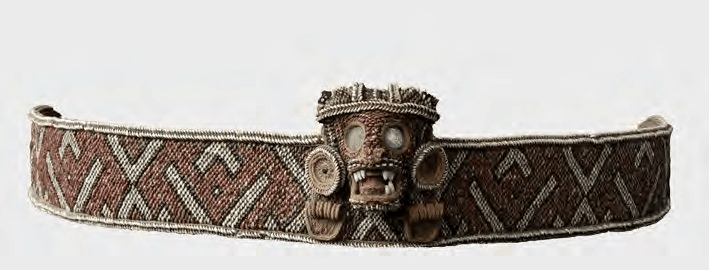Juan de Betanzos's Narrative of the Incas is yet another chronicle by a Spaniard on the history of the Inca Empire. The advantage of this chronicle is that it was composed in the 1550s and its author was married to a woman who was a mistress of Pizarro and a wife to Atahualpa. Through her and her elite Inca relatives and connections, Betanzos undoubtedly received many traditions and narratives on the past of the Inca Empire. By and large, he provides what became the standard account of Inca origins beginning with Pacaritambo and the early Inca kings or rulers If one reads between the lines, there may be a story of conflict among the 4 brothers and their wives who left Pacaritambo since one of them, Ayar Cache, was tricked into returning to the cave and trapped.. He has less to say on the period preceding Pachacuti and that final century of imperial expansion. Basically, Pachacuti established all the greatest aspects of Inca civilization, laws and urban planning in Cuzco and beyond. Indeed, Betanzos credits him with rebuilding Cuzco, establishing storehouses, building the Temple of the Sun, and probably with the practice of reciting narrative poems on the exploits of past Inca rulers at their statues. His role in the creation of an Empire after the defeat of the Chancas is undoubtedly idealized. Indeed, according to Betanzos's informants, Pachacuti was so great that he applied the laws equally to nobles and commoners alike.
The rest of the first part of the chronicle covers the conquest of Quito, wars and conflicts against rebel provinces or peoples, the Andesuyo campaign against Amazonian peoples, and Pachacuti's prediction of the Spanish conquest after the reign of Huayna Capac. The ethnographic details reported in the Andesuyo campaign are fascinating since the description of its people reveals similar customs with those of indigenous people in the Caribbean (storing the bones of deceased relatives on the top of the wall of one's home). Perhaps the Incas also saw the "naked" Amazonians as savage, too, since they were reported to be lazy cannibals. Yet from their region gold dust, jaguars, parrots, amaro snakes and Amazonian people were brought to Cuzco. I could be entirely wrong here, but I wonder if Guaman Poma de Ayala's reference to an Inca ruler who could transform into a jaguar was actually a reference to the brother of Topa Inca Yupanque. According to Juan de Betanzos, this brother was famous for killing a jaguar and then actually ate Amazonian enemies after their rebellion. Maybe there's some kinda mystical or shamanistic belief that this guy, Inca Achache, actually "became" a jaguar when he killed/ate enemies. And somehow Guaman Poma mixed him up with his brother? This leads one to think about the subtle changes in the portrayal of the Incas in the different oral traditions.
The rest of the chronicle covers the conflict between Huascar and Atahualpa and the Spanish conquest. Perhaps due to the bias of his wife, who was in Atahualpa's camp, Huascar is portayed as an alcoholic and incompetent ruler who triggered the disastrous war with his half-brother. Atahualpa, also apparently drunk at inopportune times, was more skilled and had excellent generals and warriors that defeated Huascar. The Spanish, of course, benefit from the confusion caused by the belief of some that they were viracochas and the recent war between Atahualpa and Huascar. The long, murderous section on this violent end of the empire largely ignores the conflict between Pizarro and Almagro but ends while describing the Vilcabamba Incas. Sadly, a black woman of Diego Mendez, who warned the Inca that his Spanish allies were about to betray him, was killed after the assassination of the Inca. Overall, some of Betanzos's account of this period is difficult to follow and certainly reflects the bias of his informants. But it is interesting to think about what would have happened if Atahualpa had not been captured by Pizarro. Would he have finished the move of the capital from Cuzco to Quito? Would the war-torn empire have been able to recover and survive longer into the 16th century?

No comments:
Post a Comment